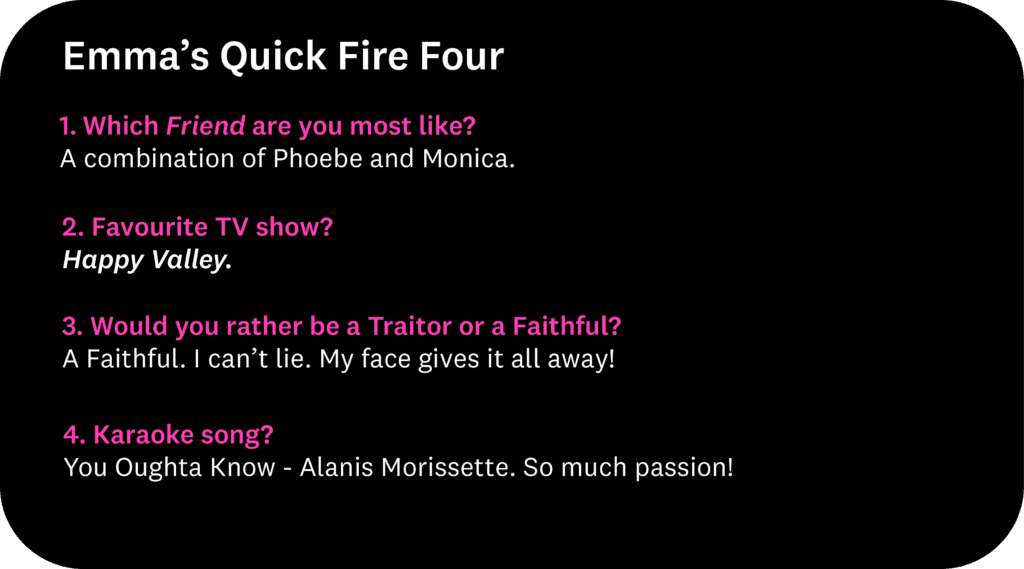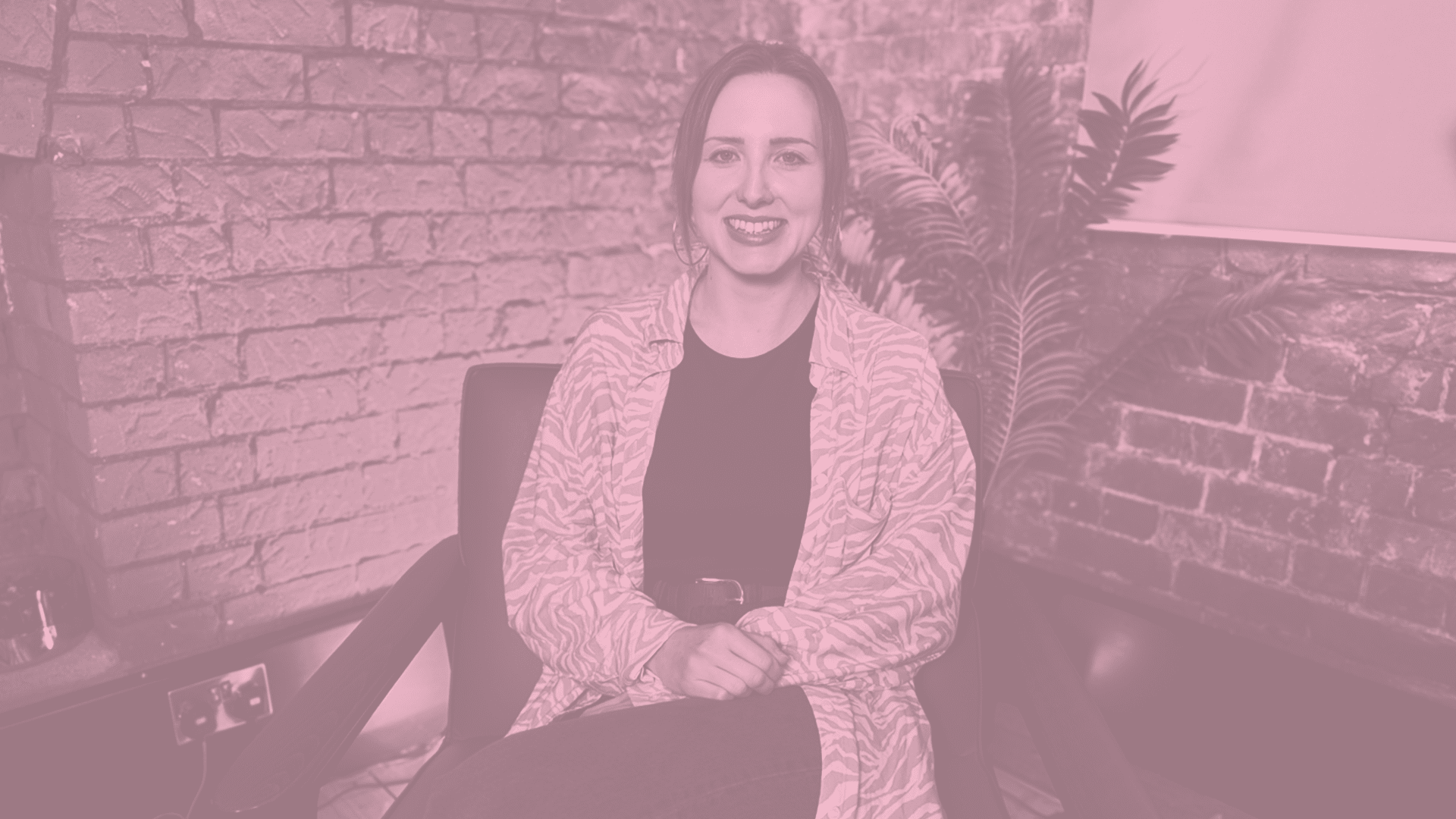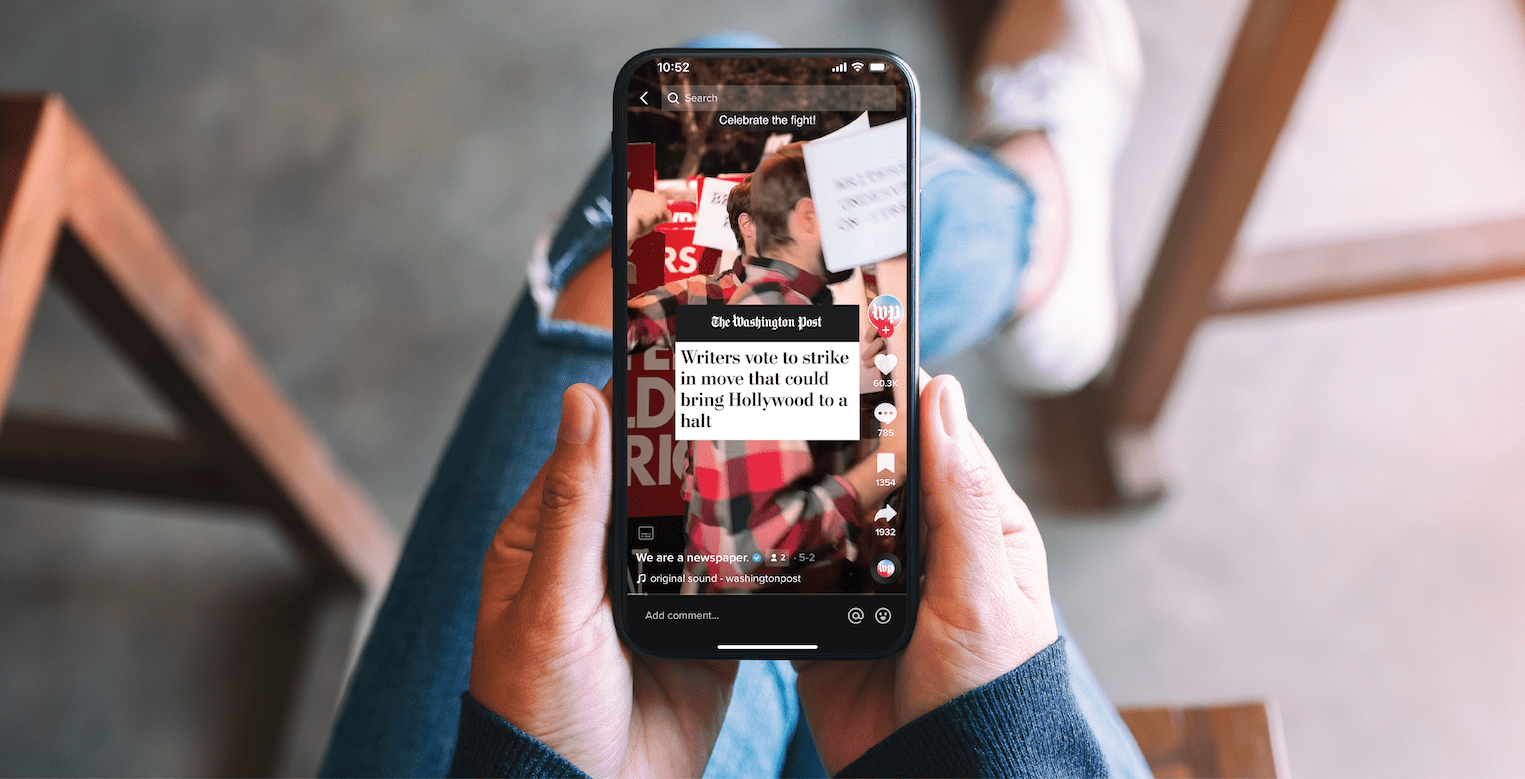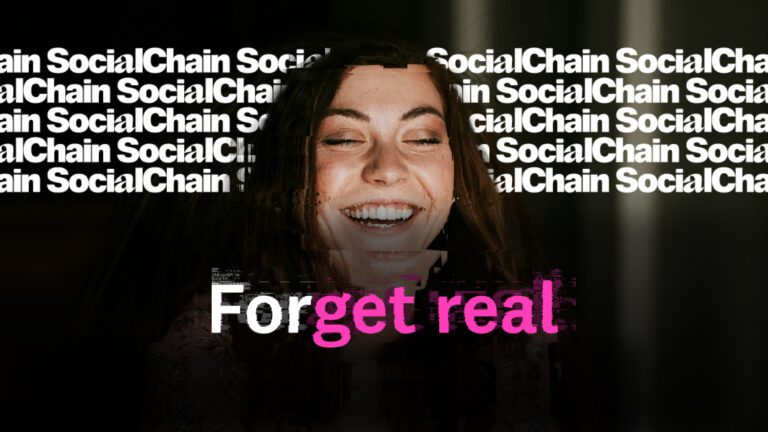The Linkup: Emma Lyskava
Three things about Emma Lyskava: she’s a diehard Swiftie, a caramel latte lover, and she labels her laptop charger to deter thieves. She’s fiercely protective of her seat in the office studio, but she’s earned the right to, having been a mainstay at SocialChain for six years. During that time, she’s been the creative force behind some of our strongest work, like Jameson Whiskey’s collaboration with Marble Mannequin for the Remixed campaign and KFC’s ”1 like and we’ll change our fries” X post.
Emma became a senior creator when SocialChain transitioned to its creator model in lieu of the traditional ‘creatives’ agency structure last year. So what has that meant for one of the most crucial roles in the agency? In our second Linkup interview, find out Emma’s go-tos for creative inspiration, whether brands should get political on social, and what it takes to craft a viral moment.
Hey Emma! Your background is very consistent in that it’s in creative, social-based roles. Was this something you always had in mind for your career?
Jobs in social were nowhere near as prevalent when I was starting my career as they are now. I graduated in 2012 when social media was in its infancy.
While I was at uni studying English and creative writing, I was very into blogs. One of the blogs I read was from someone who worked in digital marketing as a copywriter, and I thought, “I could do that!”
The good thing about working in social is how multidisciplinary it is. It’s not just words – it’s images, videos, graphics. It’s a little bit of everything!
Let’s talk about your role of senior creator. Can you explain what the creator model is and what it’s meant for your day-to-day?
Social media moves fast. The creator model streamlines our way of working so we can react to changes and push out new content quickly. It’s made our roles even more multidisciplinary! It’s not about being a one-man band, but rather about speed and making the process as streamlined as possible.
People like to watch people in their natural environment. We’re finding the type of content that performs best is more UGC, authentic, off-the-cuff stuff. It’s not a high-scale production shoot with all the bells and whistles. People want to see what a product really looks like, not a stock image. That’s what we’re aiming for because that’s what works on social.
When you pitch your reactive ideas to clients, do you know they’ll go viral?
It’s a gut feeling. Most of the time, yes! But sometimes when you’re pitching, you have to say, “hear me out”, because the client might not understand all the references at first – these things can be 100 layers deep on social!
Having said that, there have been a few reactives that I’ve thought, “yep, that’s a banger”, and it’s flopped. But you just have to move onto the next one and hope you strike gold again.
What’s the process behind a typical campaign as far as creative goes?
It depends on the client. Often we’ll recommend an overarching creative platform, but the content will change depending on the channel or platform functionality. If it’s TikTok, we’ll be executing with a video; if it’s X, it could be a thread or a repost, or we could focus on community management. A quote repost or an Instagram Stories Sticker might seem like simplistic features, but there’s no end of creative ways to use them.
And where do you get ideas for these creative activations?
I save a lot of social content that I find inspiring from my own perspective as a user, whether they’re from other users, creators or brands. I can get inspiration from anywhere – from buses to billboards!
I also look at what’s been performing well for similar brands to the client in question. Often I’ll lean on our strategy team’s insights. They do a lot of social listening to surface whatever’s trending in our clients’ verticals.
Then comes the tricky part – connecting what’s in the brief and what the brand wants to do, to what people are talking about, watching, or engaging with on social. You can’t shoehorn it in. It has to be a perfect marriage of the two!
What’s your number one piece of advice for brands on social?
Be brave. Pushing the boundaries is what gets cut-through. If you play it too safe, you’re not going to get noticed.
If you can surprise people and do the unexpected thing, you’ve already won half the battle, because people are suddenly paying attention. This is a tactic we employed for KFC’s Fries campaign, and it worked really well. We embraced negative reviews of KFC’s fries by resurfacing old comments and collating them into a TikTok, which was basically KFC’s way of hinting that the change was coming. Not many brands are brave enough to do that.
Who’s your dream client, if you could take your pick?
The BBC. Social is a second screen for so many TV shows and sporting events – it’s a symbiotic relationship. I think we’re moving away from a binge watching, on-demand model and towards linear TV, where the latest episode of The Traitors really feels like a shared experience because of social. It would be so fun to work on social campaigns for the TV shows everybody’s talking about!
I imagine you’d encounter some red tape though. You’d need to stay apolitical, for one thing. Do you think brands should be political on social?
It’s all down to whether you have a strong brand voice. So many brands are scared of being too political because of how it could impact their bottom line, so they say nothing. Is that worse than speaking up? I don’t know. But I don’t have the right to dictate to a client whether or not they should be political. That goes beyond me – and beyond social.
We’ll finish on a high. What’s the best thing you’ve worked on during your time at SocialChain?
It has to be KFC Fries. One of the great things about the campaign was that social led the change. It was the first channel to go live with the announcement, “1 like and we’ll change our fries”, which really solidified the narrative that the power to change the product had been placed in the social media admin’s hands. It was so great that KFC was open to doing that.
I even saw some LinkedIn posts debating whether the new fries really were the work of the social media admin. I can’t believe people were talking on LinkedIn about a tweet I’d written. Look Mum, I’ve made it!






